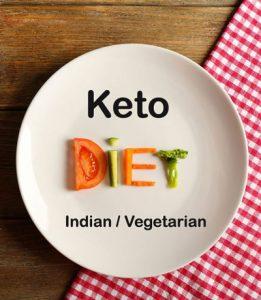If the tenets of a keto diet high in fats and low in carbs sound familiar, you’re not wrong. Atkins and keto are not dissimilar. The goal of both diets is to help you lose weight more efficiently by reaching a metabolic state in which your body burns fat (instead of carbohydrates) and sugar (for fuel). Classic keto diets are very high in fat, can be quite restrictive, and are often done with medical supervision. But this ultra-high level of fat may not be necessary for you to maintain the fat-burning state of ketosis. Atkins is a ketogenic diet, but one with more food choices and a greater balance of macronutrients.
Keto Diet for Beginners
Decrease carbs (but eat more veggies)
Eating a very low-carb diet is important to achieving ketosis, but low-carb does not mean no carb. With Atkins 20, net carbs are restricted to 20g or fewer per day for about two weeks to guarantee that ketosis is achieved. After this induction phase, you will gradually add small amounts of net carbs back into your diet while still burning fat. You can easily count the net carbs you are consuming with the Atkins® app or this guide.
When limiting your carb intake on a keto diet to 20–40 net grams per day, it is important to eat plenty of foundation vegetables to ensure you’re getting all of your necessary vitamins and minerals, as well as fiber. Reach for nutrient-dense, non-starchy veggies like kale, broccoli, spinach, asparagus, mushrooms, and peppers. Another bonus: the combination of eating whole foods plus gradually adding net carbs as you maintain ketosis also helps prevent setbacks, hunger pangs, and cravings for processed foods.
Decrease stress
We know that sometimes this is easier said than done! High levels of the stress hormone cortisol can elevate your blood sugar levels and get in the way of your body’s ability to achieve ketosis. If your job or personal life is currently more stressful than usual, you may want to wait to start a keto diet. You can also help reduce stress by getting lots of sleep, exercising regularly, and trying relaxation techniques like meditation or yoga.
Increase healthy fats
Low-carb keto diets replace your reduction of carbs with an increase in fat, which typically accounts for at least 60% of your daily calories. Because we’ve been told for so long to avoid fat, most people under-eat fat when trying a keto diet. It is important to choose healthy fats from high-quality plant and animal sources, such as olive oil, avocado oil, and coconut oil as well as cheese, eggs, nuts, and fish.
Increase your water intake
Water is crucial to supporting your metabolism and regular body functions, and low-carb diets like keto have a diuretic effect on the body. Not consuming enough water, especially during the induction phase, can lead to constipation, dizziness, and cravings. In addition to drinking enough water, make sure you’re getting all of your electrolytes by adding some broth to your diet or a little extra salt to your food.
Maintain your protein intake
A keto diet requires eating enough protein to supply the liver with amino acids to make new glucose for the cells and organs, such as your kidneys and your red blood cells, that can’t use ketones or fatty acids as fuel. Not consuming enough protein can lead to loss of muscle mass, while consuming an excessive amount can prevent ketosis.
Also read about:
How To Download Videos From Instagram With The Help of FastDL Downloader
Name For The Company Tips For Choosing
Innovations in Physical Therapy Equipment and Techniques

